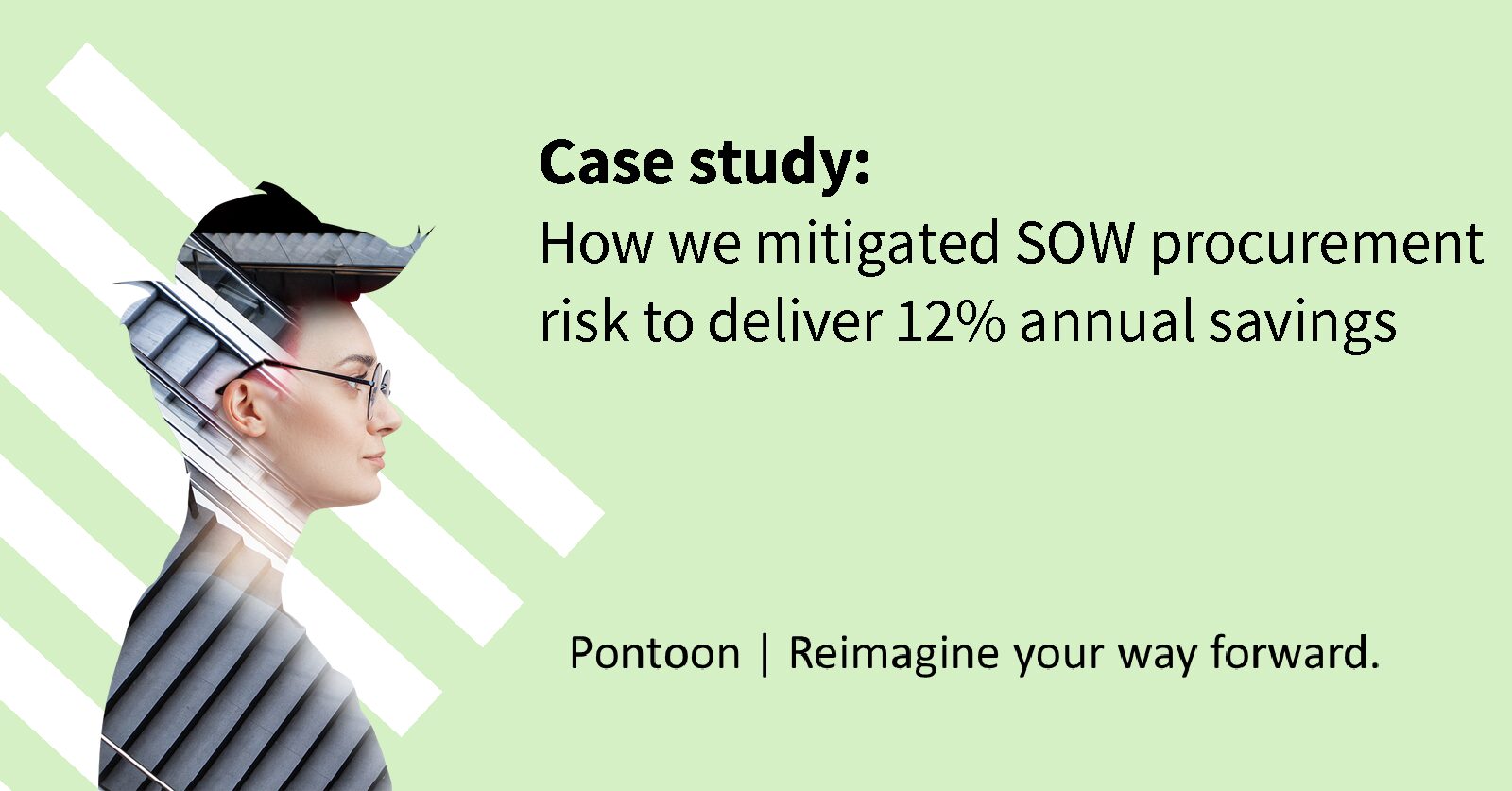SOW compliance strategies for cost avoidance
Summary
Achieving cost efficiency through strategic SOW procurement
Our client, a global financial services company, was facing challenges with misclassified SOW projects in the UK. Initially, the company was unaware that over half of their 90 SOW projects were misclassified. They risked regional compliance issues and financial consequences. As an experienced procurement service provider, we proposed a comprehensive solution that resulted in €488,000 in cost avoidance in the first year and an additional €72,000 in the subsequent year.
The challenge
Navigating misclassification risk and inefficiencies
The client, a global financial services firm, grappled with misclassified SOW projects in the UK. This led to inconsistent reporting, compliance issues, and potential co-employment risk. With 90 SOWs lacking specific parameters, time and materials metrics, and deliverables, the challenge was clear. We needed to bring structure, accountability, and SOW compliance to the programme.
How we helped
Comprehensive procurement solutions for SOW transformation
Evaluation: Pontoon conducted a thorough audit of the existing contractor Statement of Work. We held 1:1 sessions with 78 managers to assess individual scopes, perform gap analyses, and determine the nature of each agreement. Compliance and co-employment risks were also scrutinised.
Education and alignment: Recognising a knowledge gap among stakeholders, we conducted a roadshow. We offered ten training sessions to educate 120 hiring managers on SOW capabilities and deliverables.
Vendor partnership: We collaborated extensively with vendors. We migrated SOWs away from staff augmentation and re-engineered contracts for fixed-price models based on deliverables.
Re-design: Addressing issues with existing SOW structures, we developed a standard framework and output-tracking method for future SOWs. This simplified vendor evaluation for hiring managers.
Change management: Implementing a change management system, we centralised change requests. This streamlined the process and provided a more comprehensive view of SOW programme data.
Impact
Structured efficiency, SOW compliance, and £3M cost savings
The re-engineering of 50 SOWs for compliance, clear project roadmaps, and an emphasis on tendering new projects resulted in over £3M in cost savings for our client.
Vendors are now accountable for resources and project deliverables, enhancing vendor consultant engagement and minimising tenure liability. Trust between stakeholders and Pontoon is at an all-time high, showcasing the successful revamp of the services procurement programme.
Related Case Study
While overseeing a major financial institution's global Managed Service Provider (MSP) programme, Pontoon identified a significant opportunity for SOW procurement improvement: addressing rogue spend associated with Statement of Work (SOW) ...




